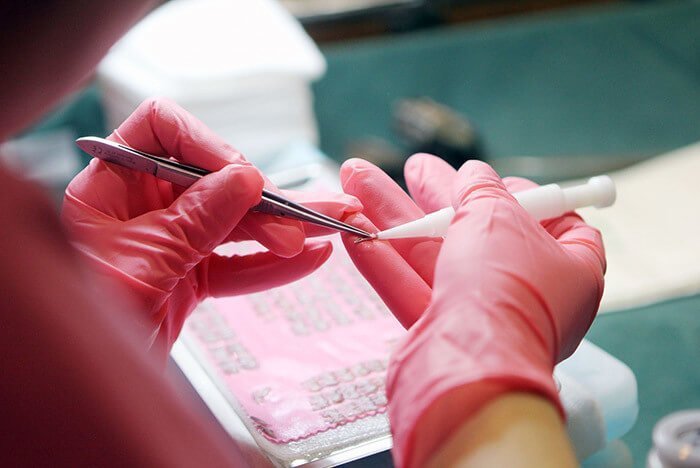
DHI (Direct Hair Implantation) technique, which takes its name from the way the operation works, is the process of transplanting the grafts taken from the donor area with the FUE method, with the help of special pens without opening channels to the areas to be planted. As the canal is not opened during the procedure, the bleeding rate is less than the classical technique. In the DHI operation, which is known as an advanced technique of the FUE method, the time spent by the patient during hair transplantation does not change, while the recovery time is faster. The general purpose of this process is to reduce the number of contacts with very delicate grafts and to increase the quality of the transplanted hair. In addition, a denser hair appearance is obtained as a result of the operation because more frequent transplantation can be made with the DHI technique. As no damage is done to other hairs during the DHI process, it is easily applied to hair that has not completed hair loss or is decreasing. Finally, since no incision is made on the patient, returning the patient to daily life as quickly as possible after transplantation is among the main purposes of the procedure.
Which Stages Are Passed During the Application of the DHI Technique?
First of all, as in all hair transplant operations, local anesthesia is applied to the area where the patient’s grafts will be taken and the area to be transplanted during the DHI technique. As in the classical technique after anesthesia, in the DHI technique, the grafts are taken one by one from the donor area with the help of a micro-motor. These grafts are placed one by one in 0.6 mm – 1.2 mm pens, which are proportional to the thickness of the grafts, and planted where needed. The main reason why this process is recommended by experts is that it allows the hair follicle to be transferred quickly without any other procedure after extraction.
What are the Advantages of the DHI Technique?
- A more frequent planting can be done compared to the classical technique.
- A faster recovery occurs as there will be no incision in the area to be transplanted.
- As the contact with the roots to be planted will decrease, a healthier result will be obtained.
- As there will be less bleeding compared to the classical technique, the complication rate is lower.
- Transplantation can be done without damaging the existing hair.
- It allows planting without cutting the hair.
What are the Disadvantages of the DHI Technique?
The operation time is slightly slower than the classical technique.
What is Dhi Hair Transplant?
What is Dhi hair transplant prices in Turkey?



No Comments
Sorry, the comment form is closed at this time.